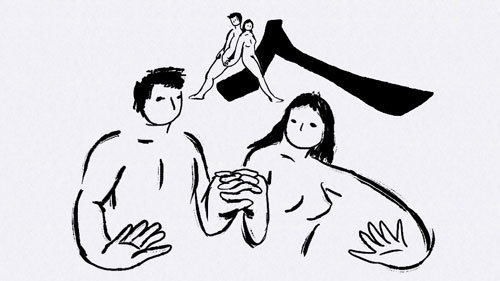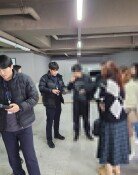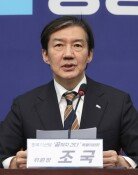Thousand-Character Text Exhibit at Seoul Arts Center Opens August 17
Thousand-Character Text Exhibit at Seoul Arts Center Opens August 17
Posted August. 09, 2005 03:07,

A unique exhibit that uses the Thousand-Character Text is opening. Haneulcheon Ttaji - The Thousand-Character Text & Idea Studies Arts of the Joseon Dynasty set to open on August 17 through September 19 at the Calligraphy Art Museum located in Seoul Arts Center is an educational exhibit that introduces a fascinating program through the application of various Thousand-Character Text books.
The thousand-character text always brings up pictures of Chinese character booklets that grandfathers or Chinese classics instructors teach. But the Text isnt just simple memorizing of letters, but a vast epic poem of 250 free verse stanzas and 125 verses that consists of 1,000 Chinese characters. There are stanzas that tell of Chinese history, the birth of the four seasons and farming, and morals and principles. Curator Lee Dong-guk says, For example, `Mangdampidan Mishigijang admonishes observation of others faults, and dependence on ones own strengths. The text is a comprehensive class material that encompasses manners, nature, history, and philosophy, just to name a few, and added, For this purpose I am trying to shine a new light on the thousand-character text.
The original manuscript of the text dates back from when the sixth century Chinese Namjoyangs Juheungsa wrote a composition and gathered relevant characters from Wang Hee-jis penmanship. It isnt known when it came over to Korea, but records of Baekjes Dr. Wangin conveying the Thousand-Character Text Volume One and 10 volumes of the Discourses of Confucius to Japan in 258 A.D. appear in a Japanese record book. As with China, moralists or the gentry, as well as calligraphists in Joseon, left text holographs in diverse handwriting. Anpyeong Prince (1418-1453), Park Paeng-nyeon (1417-1456), Lee Hwang (1501-1570), Kim In-hu (1510-1560), Hanho (Han Seok-bong1543-1605), Shin Wie (1769-1845), Lee Sam-man (1770-1845), Cho Yun-hyeong (1725-1799), and Jeong Yak-yong (1762-1836) are the most well known.
The most popular text is, of course, the Seok-bongs Thousand-character Text consisting of three styles including print and cursive that Han Seok-bong wrote at the command of the emperor in 1583. It was revised countless times afterwards, and became the standard for Joseon writing after the 1800s with even a Banggak copy (engraving from impression) published. At long last, this year marks the 400th anniversary of Han Seok-bongs death.
Meanwhile, as a true pragmatist should, Jeong Yak-yong wrote Ahakpyeon from his view that there was a need to teach everyday Chinese characters that makes specific experiences possible.
At the exhibit, a total of some 100 types of 130 books that show varying texts appear, dating from a 500-year-period of the Joseon dynasty, enlightenment, and Japanese colonial rule. The effort to escape from the frigid exhibits of past calligraphy exhibits is evident. Thousand-Character Text writing, stone rubbing, games, as well as a India ink animations by Guk Kyung-jin that explain the text in easy subtitles like the laws of nature; family" "friendship; loyalty between a ruler and his followers; farming and Thanksgiving, and a performance by the Yeomulmok ballet troupe with the theme of the texts Black Ink-dyed White Thread can be enjoyed. You can catch the seminar Asian Academic Artistic World Values through the Thousand-Character Text on the afternoon of August 20 and on September 10 at 2:00, 3:00, and 4:00 p.m.
Weekdays 11:00 a.m.-6:00 p.m. (every Monday is a holiday, open during Chuseok). Adults and college students: 5,000 won; elementary, middle, and high school students: 4,000 won, kindergartengroups (over 20 persons): 1,000 won. Those with cards from BC, who sponsors the exhibit, are free of charge until September 3; accompanying persons: 3,000 won. For more information, call 02-580-1282-3, or log on to www.sac.or.kr.
Mun-Myung Huh angel@donga.com




![‘무사고 장롱면허’ 1종 안준다…내년 달라지는 도로교통법 [알쓸톡]](https://dimg.donga.com/c/138/175/90/1/wps/NEWS/IMAGE/2025/12/30/133064716.2.jpg)


